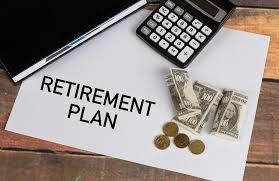
Being a self-employed, independent contractor, or working for a small business can seem like a dream. However, one downside is that you are unlikely to have access to a workplace pension plan, such as (k). Sure, you can hit the annual IRA limit of $ 6,000, but that may not be enough to meet your savings goals. This is where the Keogh plan comes in. A Keogh plan is a deferred retirement plan for the self-employed and small businesses.
What is a Keogh plan?
A Keogh plan is comparable to a 401 (k), it is personal and tax-deferred, but it is intended for very small businesses. It offers self-employed, such as doctors and writers, tax breaks and benefits similar to those working in more traditional corporate settings. A small business must be a partnership, sole proprietorship, or limited liability company (LLC) to use a Keogh. Employees of small businesses may also be eligible, but the employer contributes in place of the employee.
The IRS now refers to Keogh's plans as "HR 10" or "qualified plans," although many people still use the original term. Technically, "Keogh" is no longer relevant; although it only refers to independent plans, the law no longer distinguishes between business plan sponsors and other plan sponsors. As with your IRA, your Keogh plan can contain stocks, bonds, mutual funds, and certificates of deposit.
When you contribute to a defined contribution plan or a defined benefit plan, those contributions are deducted from your taxable salary. Then, upon retirement, distributions are taxed as ordinary income. You can retire before age 59.5, but you don't begin to withdraw until age 70.5. Early withdrawals are taxable, plus a 10% fine, except in the case of adequate physical or financial circumstances. If you continue to work until the age of 70, you can contribute, but you must also make the necessary distribution. For fiscal years beginning after December 31, 2019, taxpayers who turn 70 and a half after December 31, 2019, must begin mandatory distributions at age 72.
There are two types of Keogh basic plans: a defined contribution plan and a defined benefit plan.
Defined Contribution Plan
Defined contribution plans allow employers to set their contributions. Within this group, there are two subtypes: Profit Sharing Plans and Money Purchase Plans. With a Profit Sharing Plan (PSP), you don't have to show your income to contribute. You can decide on the contribution to your plan each year. The value can also change from year to year. PSPs limit how much you can contribute, but anything below that amount is fair game.
A money purchase plan, on the contrary, requires you to contribute a fixed percentage of income each year. This can represent up to 25% of the compensation amount. You decide the percentage from the start. It is impossible to change the amount, provided that the company made a profit in that year. If you change your percentage or don't contribute for a year, you could be penalized.
The other type of Keogh plan, a defined benefit plan, determines the annual benefits you will receive in retirement. A defined benefit plan works like a regular pension, but you fund it. You can contribute up to one hundred of your salary for this type of plan. The IRS has the exact formula for calculating your premium. Your years of employment, salary, expected return on plan assets, and other reported benefits will determine the contribution amount.
Advantages and disadvantages of the Keogh plan
Keogh plans offer several advantages to the self-employed. Your contribution limits are higher, which means more money is going into your account, which can be especially beneficial for higher-income seniors. Keogh's plans offer small business owners and even employee's tax savings with tax benefits. Small business employers can also deduct contributions made by their employees.
However, Keogh's plans have some problems, as they are quite complex financial instruments. They often need tax and financial advisers to handle the large amount of paperwork required. Hiring a professional is another step the taxpayer can take to ensure that the numbers and calculations are done correctly. Keogh plans also require more maintenance than Simple IRA, simplified employee pension plans (SEP), or 401 (k), which means these costs can increase. Also, some plans require you to contribute each year to meet a minimum funding standard. This also applies if you do not have cash.
2020 Keogh Plan Contribution Limits
If you have a profit-sharing plan, you can contribute the amount you want, except your contributions. You can contribute up to 25% of your salary or $ 57,000. If you plan to go with money purchase plans, you contribute a fixed percentage of your income each year. The amount of the contribution will come from the IRS ratio. Again, you can give up to 25% of your salary, not including your own contributions.
If you have a defined benefit plan, your contributions depend largely on the benefit you set and other factors. It would help if you had an actuary to determine your actual values. Otherwise, there are no other contribution limits. When it comes to distribution, your maximum annual profit will reach $ 230,000 for 2020.
Bottom Line
When looking for the best retirement plans, you will need to carefully consider several plans, especially if you have a small business or self-employed. A Keogh plan might not be the best option when compared to simple SEP-IRAs, individual 401 (k), or solo 401 (k). Nonetheless, when you look at the plans, you don't want to forget that these qualified plan structures exist.
FOR MORE INFORMATION OR TO MAKE AN APPOINTMENT WITH US TO SEE HOW WE CAN BEST HELP YOU WITH YOUR TAX FILING NEEDS, PLEASE CONTACT Flynn Financial Group, Inc, BY CLICKING THE BLUE TAB ON THIS PAGE.
THANKS FOR VISITING.
Flynn Financial Group Inc